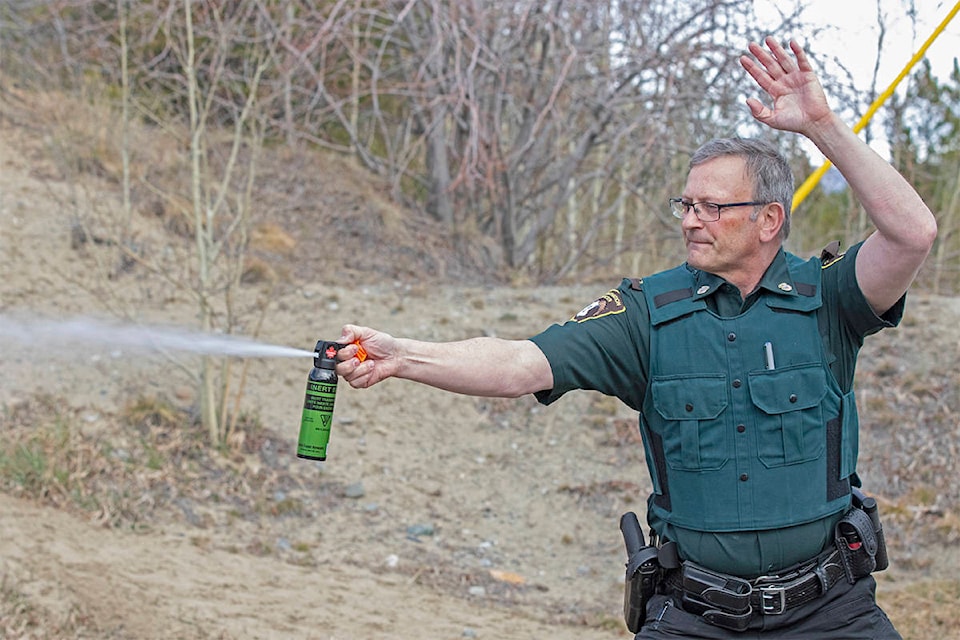As bears once again begin to emerge from their dens across the territory in search of food, Environment Yukon is issuing an annual reminder to Yukoners — be bear-smart and bear-safe.
Yukoners, as always, must be vigilant about securing bear attractants in order to prevent human-wildlife conflicts this time of year, some of which can lead to dangerous outcomes, chief conservation officer Gord Hitchcock told media at a bear safety briefing on May 7.
“Maybe you keep your garbage inside and lock up your compost, but do you pick your fruit in a timely manner? Do you put away your bird feeder once the snow melts, including all the seed that is dumped beneath it?” Hitchcock said.
“Bears that have been rewarded in accessing human food like garbage, compost and backyard chicken coops become food-conditioned and can become a threat to public safety… Feeding a bear is not just handing bears donuts out of a car window, but also allowing them to get a quick meal out of your garbage can.”
One bear, an adult grizzly, has already been put down this season because it had become habituated to feeding at the Haines Junction dump, Hitchcock said.
While relocating a problem bear instead of killing it “makes people feel better,” Hitchcock added, “rarely are the outcomes ever good for the bear.”
He gave the example of a sow black bear who had been residing on Grey Mountain with no issues until 2018, when natural food sources were scarce and she, along with her three cubs, began feeding on a chokecherry tree in Riverdale. The sow and cubs were translocated but 10 days later, had returned to Whitehorse and were feeding on another chokeberry tree in the same neighbourhood.
The family was once again translocated this time, 100 kilometres away via helicopter - but, during the release, one of the cubs was separated from the rest and made his way back to Riverdale yet again. The cub was moved a third time, but ultimately put down after it began feeding on unsecured dog food.
“Will we still translocate some bears? Yes,” Hitchcock said. “But Yukoners must do a better job of preventing bears from conflict in the first place.”
Homeowners unsure of how to do that can talk to conservation officers or access a wealth of education material online at Environment Yukon’s website, he said.
Yukoners should also be taking precautions when participating in outdoor activities.
“It is our responsibility to keep wildlife wild and to be bear aware,” Hitchcock said. “When you’re outdoors in bear habitat, children should be kept close, keep dogs on leashes, always carry bear spray. Enjoy the backcountry in groups of two or more and make noise to alert bears of your presence and to your presence. Your speaking or singing voice is better than bells.”
Hitchcock encouraged people to practice using bear spray in a safe environment at least once to familiarize themselves on how the canister works and to feel more prepared and confident using it should they find themselves coming across a bear in the wild.
To help facilitate that, Environment Yukon hunter education and outreach officer Jim Welsh is holding an educational session at Lepage Park at noon on May 15, where he will have practice cans of bear spray that attendees will be able to use.
Contact Jackie Hong at jackie.hong@yukon-news.com
